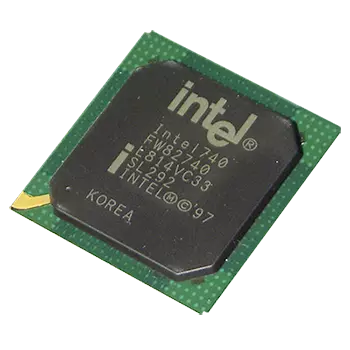
Despite the fact that modern content requires increasingly powerful graphics accelerators, some tasks are fully integrated into the processor or motherboard video studies. Built-in graphics does not have its own video memory, so it uses part of RAM.
From this article, we learn how to increase the amount of memory allocated by the integrated video card.
We increase the memory of the video card
First of all, it is worth noting that if you are looking for information on how to add a video memory to a discrete graphic adapter, we hurry to disappoint you: it is impossible. All video cards that are connected to the motherboard have their own memory chips and only sometimes when they are overflowing, "overlap" part of the information in RAM. The volume of chips is fixed and the correction is not subject to.
In turn, the built-in cards use the so-called Shared Memory, that is, the one that the system is "divided" with it. The size of the selected location in the RAM is determined by the type of chip and motherboard, as well as the BIOS settings.
Before trying to increase the amount of allocated memory for the video card, it is necessary to find out what maximum volume supports the chip. Let's see what type of embedded kernel is in our system.
- Press the Win + R keys combination and in the "Run" window input field write the dxdiag command.
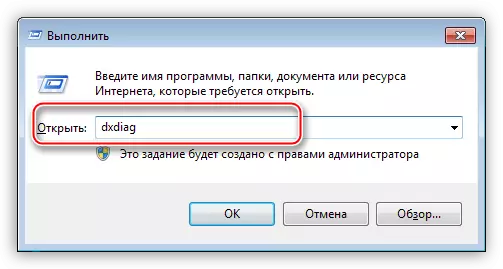
- The DirectX diagnostic panel will open, where you want to go to the "Screen" tab. Here we see all the necessary information: the model of the graphics processor and the volume of video memory.
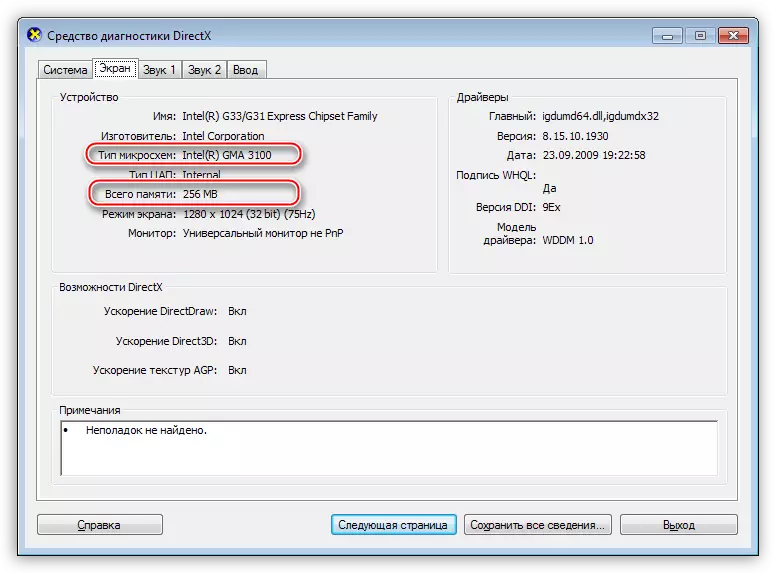
- Since not about all video chips, especially old, you can easily find information on official sites, we will use the search engine. We enter a query of the type "Intel GMA 3100 characteristics" or "Intel GMA 3100 Specification".
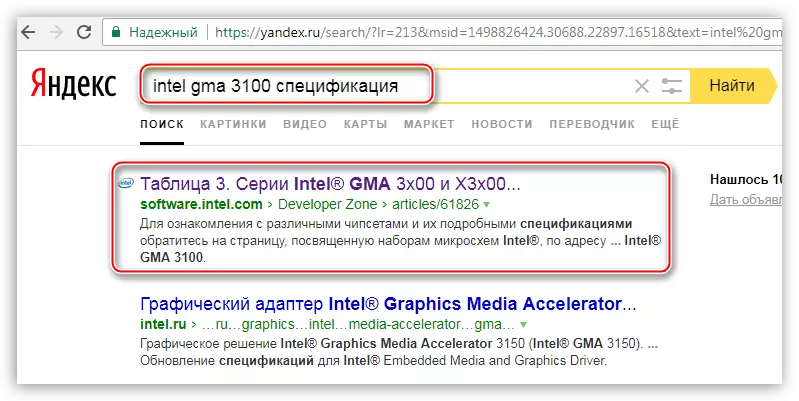
We are looking for information.
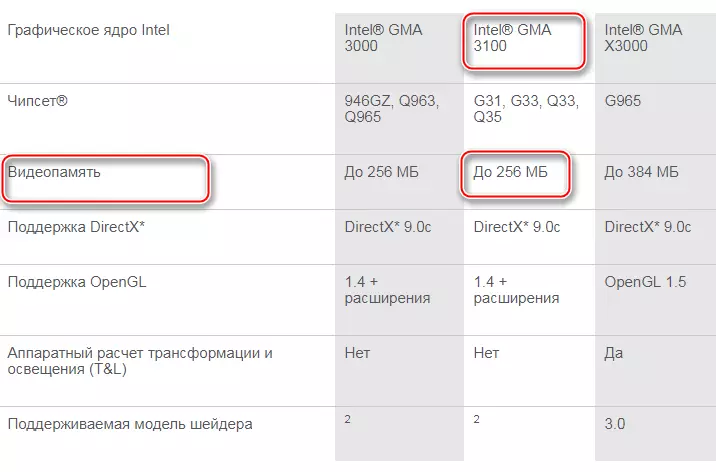
We see that in this case the kernel uses the maximum amount of memory. This means that no manipulations help increase its performance. There are custom drivers that add some of the properties to such video drives, for example, support for newer versions of DirectX, shaders, increased frequencies and other things. The use of such is extremely not recommended, as it may cause problems in work and even disable your built-in schedule.
Go ahead. If the "DirectX diagnostic tool" shows the amount of memory other than the maximum, then there is a possibility by changing the BIOS settings, add the size of the highlighted place in RAM. Access to the motherboard settings can be obtained when the system is loaded. During the appearance of the manufacturer's logo, you must click on the Delete key several times. If this option did not work, then read the manual to the motherboard, perhaps you use another button or combination.
Since BIOS on different motherboards can be very different from each other, then the exact instruction on setting is impossible to bring, only general recommendations.
For bios of the AMI type, you need to go to the tab called "Advanced" with possible readings, for example, "Advanced Bios Features" and find a point where it is possible to select a value that determines the amount of memory. In our case, this is "UMA Frame Buffer Size." Here we simply select the desired size and save the settings with the F10 key.
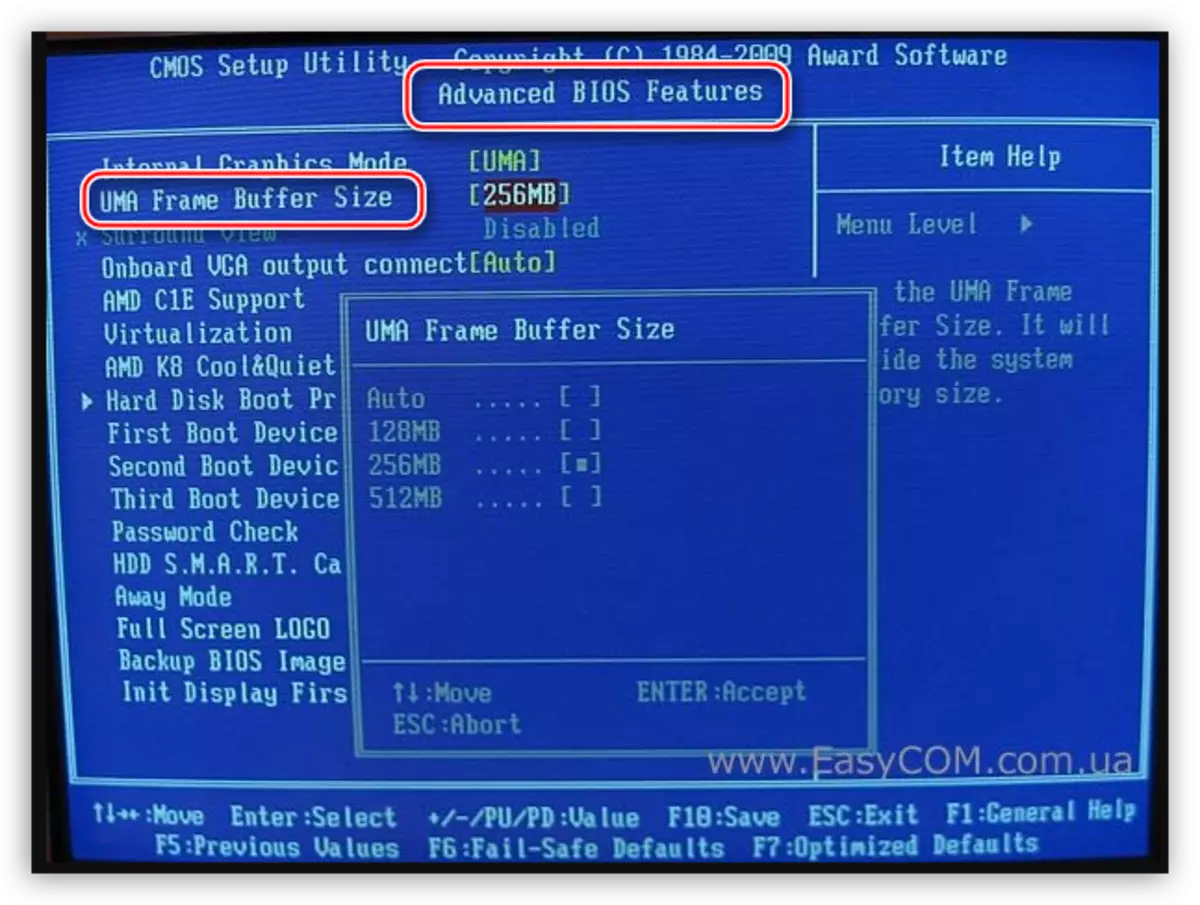
In the BIOS UEFI, you must first enable the advanced mode. Consider an example from the BIOS of the Motherboard ASUS.
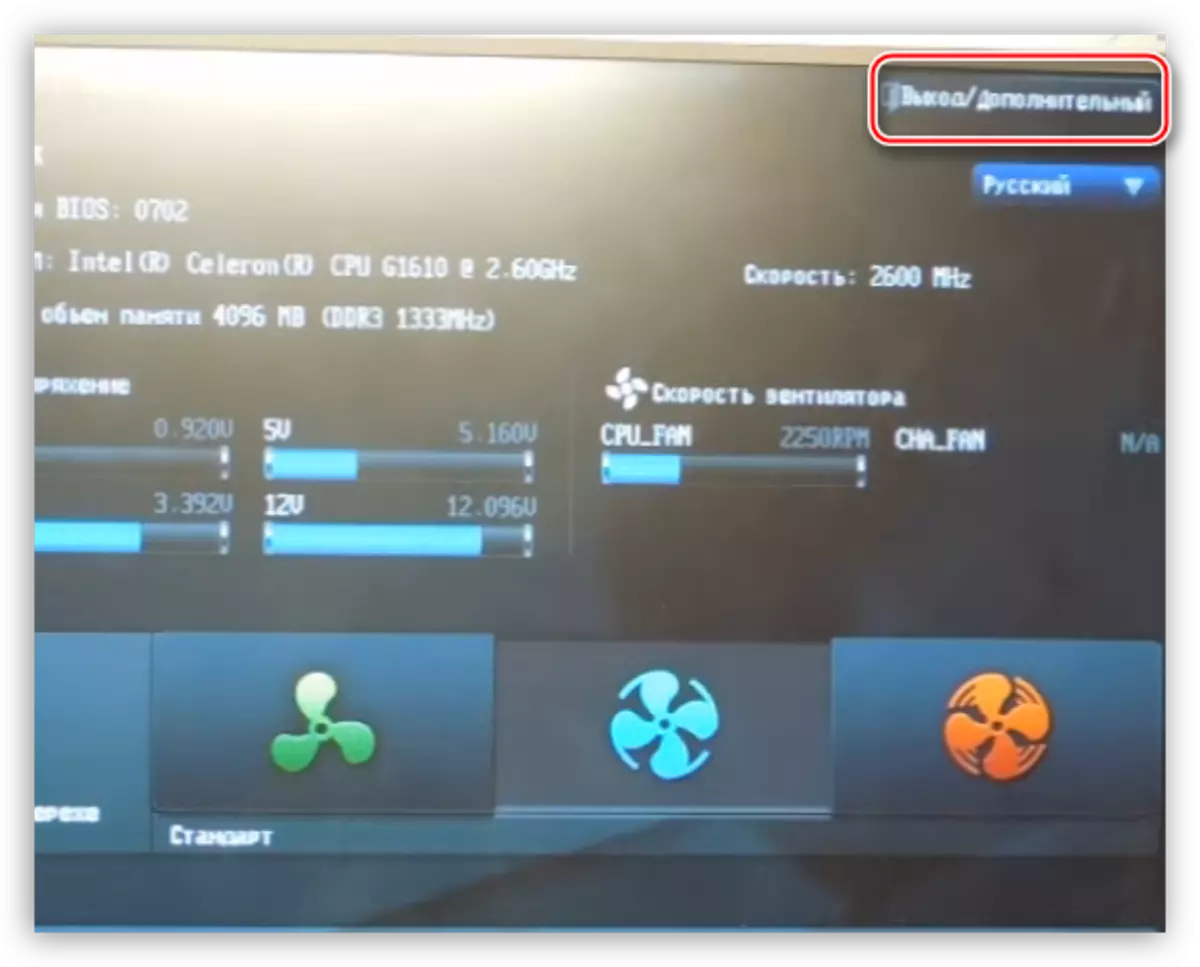
- Here you also need to go to the Optional tab and select the "System Agent Configuration" section.
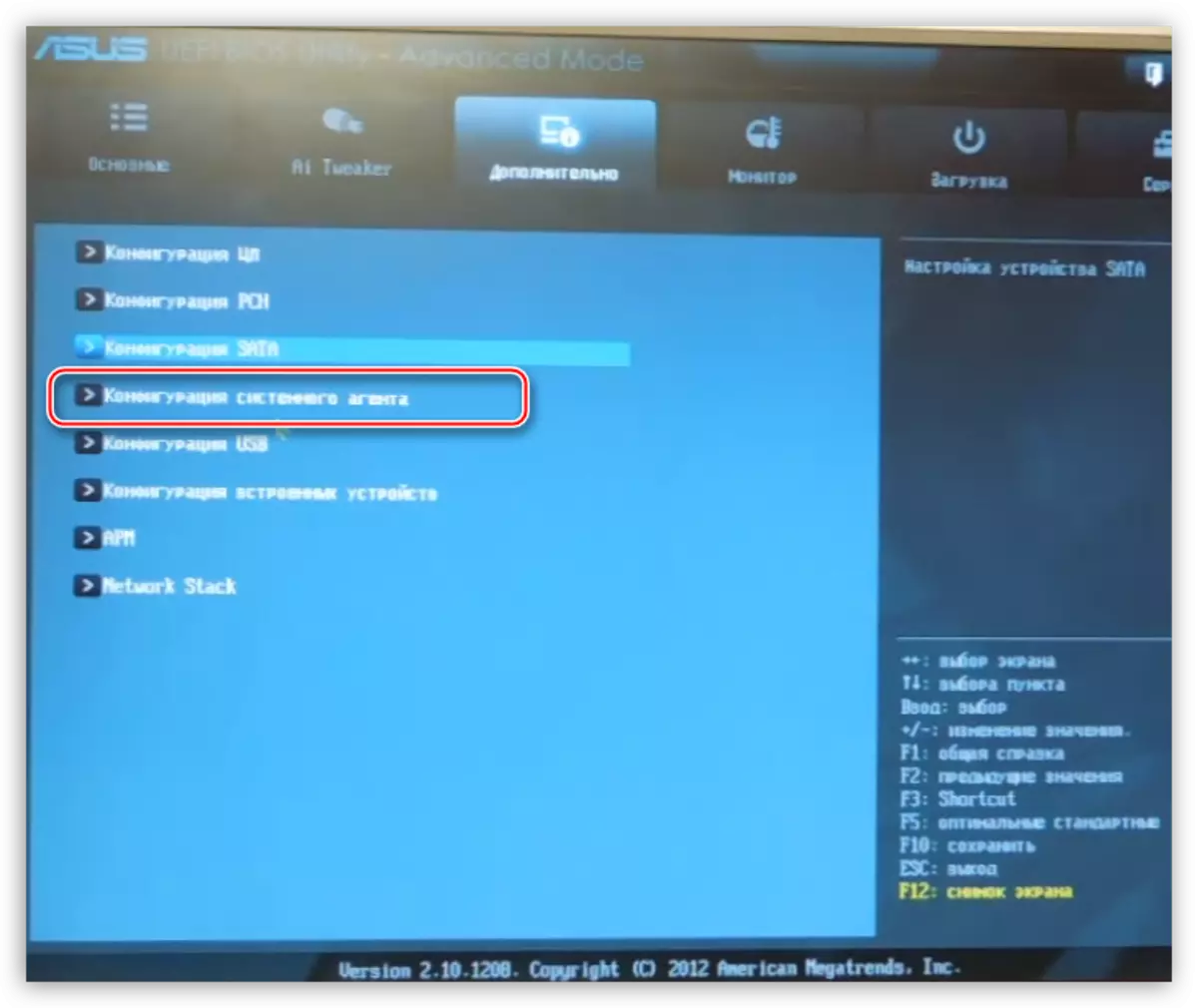
- Further, we are looking for "graphics parameters".
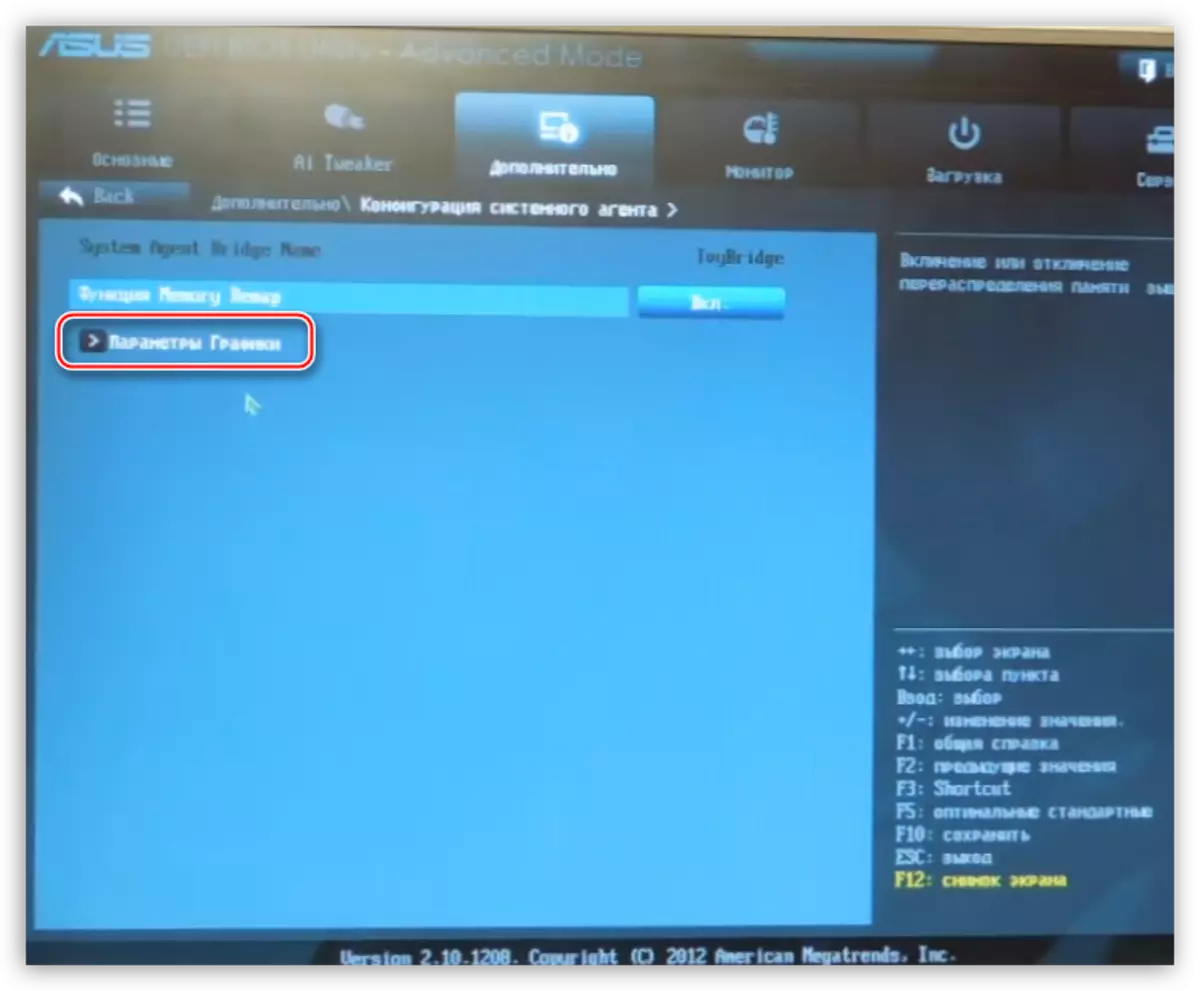
- Opposite the IGPU memory parameter, change the value to the desired one.
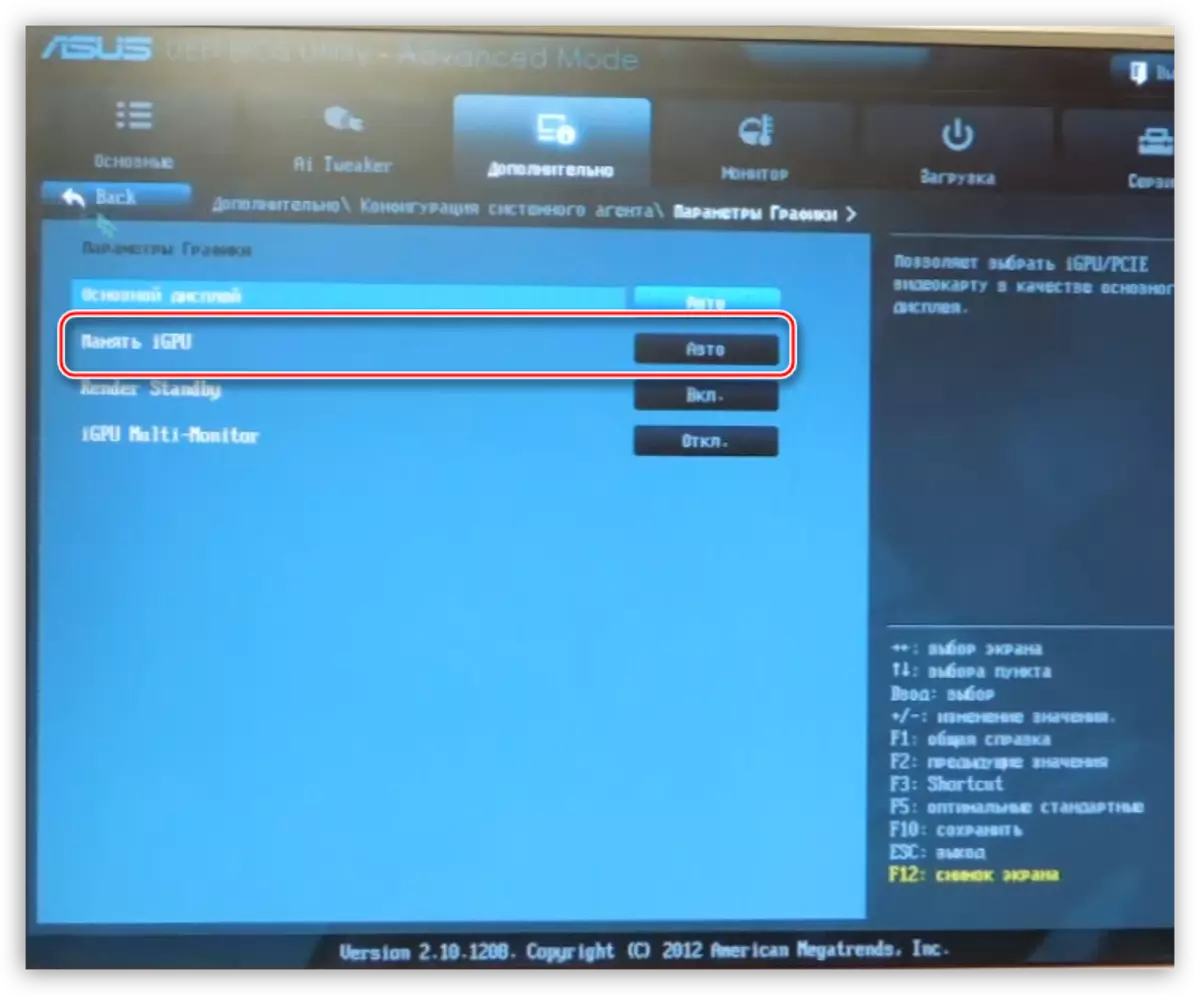
The use of the built-in graphics core carries low performance in games and applications that use the video card. At the same time, if there is no power of the discrete adapter for everyday tasks, the built-in video card may well be a free alternative to the latter.
It is not necessary to require an integrated schedule impossible and try to "dispersed" it with drivers and other software. Remember that abnormal modes of operation can lead to the inoperability of the chip or other components on the motherboard.
